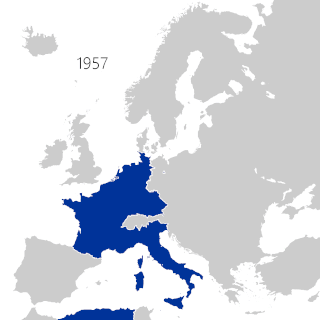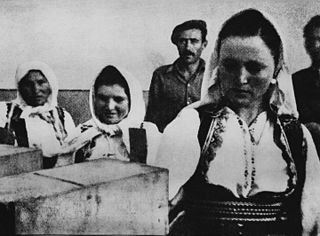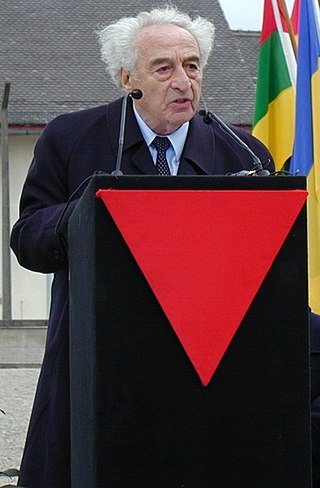Members

As of 2006, the following organizations were members of the WVF. [2]
Africa
- Algerian National Organisation of Moujahidines
- War Veterans Association of the People's Republic of Angola
- Association of War Disabled Ex-Servicemen of Angola
- National Union of War Veterans, Holders of the War Veterans' Certificate and Victims of War of Benin
- War Veterans, Ex-Servicemen, Widows and Orphans Association (Burkina Faso)
- Fraternal Association of Solidarity and Economic Mutual Aid of Veterans and War Victims in Cameroon
- National Office for War Veterans, Ex-Servicemen and Victims of War of Cameroon
- Fraternal Union of War Veterans of the French Armies of Chad
- National Veterans Union (Republic of the Congo)
- National Federation of Associations of Overseas Veterans and Servicemen (Republic of the Congo)
- National Office of War Veterans and War Victims of the Republic of Congo
- National Union of Congolese War Veterans (Democratic Republic of the Congo)
- Association of War Veterans of Cote d'Ivoire
- Egyptian Veterans and War Victims Association
- Ancient Ethiopian Patriots Association
- Veterans Administration, Ghana
- Association of Fighters for the Freedom of the Homeland (Guinea-Bissau)
- National Union of War Veterans and War Victims of the Republic of Guinea
- Lesotho Retired Military Officers Club
- Libyan League for Families of Martyrs, Prisoners of War and War Wounded
- Association of War Veterans and War Victims of Madagascar
- National Association of War Veterans and War Victims of the Republic of Mali
- National Association of War Veterans (Morocco)
- National Council for Former Resistants and Former Members of the Liberation Army (Morocco)
- Office of the High Commissioner for Former Resistants and Members of the Liberation Army (Morocco)
- Association of Military and Paramilitary Disabled Servicemen of Mozambique
- Combatant's Association of National Liberation Struggle of Mozambique
- Namibia War Veterans Trust
- National Association of War Veterans and War Victims of Niger
- Nigerian Legion
- National Federation of War Veterans and War Victims of Senegal
- Sierra Leone Ex-Servicemen's Association
- Council of Military Veterans' Organisations of the Republic of South Africa
- South African National Military Veterans Association
- Sudanese Veterans Association
- Umbutfo Swaziland Defence Force Ex-Servicemen's Association
- Tunisian Association of War Veterans and Victims of War
- National Association "Fidelity for the Rights of Families of Veterans who Fought with France"
- Zimbabwe National Liberation War Veterans Association
Asia
- Cambodia Veterans Association
- Indian Ex-Services League
- Veterans Legion of the Republic of Indonesia
- Veterans and War Victims Foundation of Iran
- Association of Disabled Veterans of the Fight against Nazism (Israel)
- Association of Disabled Veterans of World War II (Israel)
- Israel Defense Forces Veterans of War Association
- Organization of Partisans, Underground & Ghetto Fighters in Israel
- Zahal Disabled Veterans Organization (Israel)
- Japan Disabled Veterans Association
- Jordanian Economic & Social Ass. For Retired Servicemen & Veterans
- Korea Disabled Veterans Organization
- Korean Veterans Association
- Retirees Service Administration (Kuwait)
- Kuwaiti Kinsfolk Association of Martyrs, Captives and Missing
- Ex-Services Association of Malaysia
- Malaysian Armed Forces Veterans Council
- Royal Malay Regiment Officers' Club
- Nepal National Ex-Servicemen's Association
- Association of Palestinian Revolution Ex-Warriors
- Pakistan Armed Services Board
- Confederation of Filipino Veterans
- Philippines Veterans Legion
- Veterans Federation of the Philippines
- Singapore Armed Forces Veterans' League
- Sri Lanka Ex-Services Association
- Association of Veterans and Victims of War (Syria)
- Veterans Affairs Council (R.O.C on Taiwan) [3]
- Veterans Association of Republic of China(VAROC) (R.O.C on Taiwan) [4]
- Association of Veterans of the National Liberation War of Timor Leste
- War Veterans Organization of Thailand
- Veterans Association of Vietnam
- Organization of Veterans of the Yemen Revolution and the Defense of Unification
- The Veterans Legion of the Republic of Indonesia (LVRI)
Europe
- National Organisation of Veterans of the Anti-Fascist National Liberation Struggle of the People of Albania
- Unified Organisation of Veterans of the Anti-fascist Struggle of Liberation of the Albanian People
- Austrian Association of Victims of War and of Disabled
- Association of the Volunteers and Veterans of the Homeland War HVO H-B
- Association of veterans of the People's Liberation & Antifascist War of Bosnia & Herzegovina (1941-1945)
- Bosnia & Herzegovina Association of War Disabled Veterans
- Union of Association of Veterans of People's Liberation War (1941-1945) SUBNOR in the Rep. Srpska
- United Veterans Organization – Veterans Union of Bosnia & Herzegovina
- Veterans Organization of the Srpska Republic
- War Veterans Union (Bulgaria)
- Antifascist Combatants' Association of the Rep. of Croatia
- Association of Croatian Patriotic War Veterans
- Croatian Association of Prisoners in Serbian Concentration Camps
- Croatian Homeland Volunteer War Volunteer Veterans Association
- Croatian War Veterans Association
- Union of Associations of Croatian Defence Force Veterans
- Union of Associations of Croatian Defenders Treated for PTSD
- Union of Croatian Homeland War Volunteers Associations
- Veterans Motorcycle Club - Croatia
- Cyprus Veterans Association World War II
- Association of Czech Legionaries
- Czech Veteran's Association
- Blue Berets Denmark
- Disabled War Veterans Association of Finland
- Federation of Women Veterans in Finland
- Finnish War Veterans Federation
- Union of Front Veterans Soldiers
- Peacekeepers Association Finland
- Union Française des Associations de Combattants (France)
- Union nationale des combattants (France)
- German Federal Armed Forces Association
- Advisory Council on Voluntary Reservist Activities to the German Armed Forces Reservist's Association
- National General Confederation of Greek War Disabled and Victims
- Union Panhellenique des Anciens Combattants de la Résistance Nationale (Greece)
- Panhellenic Union of Veterans from the National Resistance
- Hungarian Federation of Resistance Fighters and Antifascists
- Hungarian Alliance of Military Fellowship
- National Association of War Veterans and Repatriated Soldiers (Italy)
- National Association of Families of the War Dead and Missing (Italy)
- National Association of War Disabled
- National Association of Italian Partisans
- Italian Federation of Volunteers for Freedom
- Institute of the Blue Ribbon
- Luxemburg Association of Veterans of World War II, of the United Nations Forces and of Luxemburg Peace Soldiers
- Kosovo Liberation Army War Veterans Organization
- Union of Veterans from the National Liberation and Antifascist War of Macedonia 1941-1945
- Union of Associations of Antifascists of Montenegro
- National Council of the Former Dutch Resistance Movement
- Netherlands Association of Military War Victims
- Norwegian Veterans Association for International Operations
- War Veterans Council of Norway
- Association of Combatants of the Polish Republic and Former Political Prisoners
- Association of War Disabled Persons of the Polish Republic
- World Association of Home Army Soldiers (Poland)
- UN Peacekeeping Missions Veterans Association (Poland)
- Association of Armed Forces Handicapped (Portugal)
- Veterans League (Portugal)
- National Association of War Veterans (Romania)
- Alliance of the Associations of the former fighters of the People's Liberation War in Serbia
- Association of Disabled War Veterans and Peacetime Military Invalids of Serbia
- Slovak Antifascist Fighters Association
- Association of Veterans of the War for Slovenia
- Federation of Disabled War Veterans Associations of Slovenia
- Union of the Associations of the War Veterans and Participants of the National Liberation Struggle of Slovenia
- Sever Association of Police Veterans Societies (Slovenia)
- Federation of Associations and Clubs MORiS (Slovenia)
- Association of Invalid Militaries and Civil Guards of Spain
- Association of Swedish Field Hospital for Korea
- Swedish Veterans Federation
- British Members' Council
- British Limbless Ex-Service Men's Association
- Ex-Services Mental Welfare Society (Combat Stress)
- Blind Veterans UK
- Royal British Legion
- War Widows Association of Great Britain
Former Soviet Union
- Council of Veterans of War, Labour & Armed Forces of the Azerbaijan Republic
- Association of War Veterans from the Afghanistan War (Belarus)
- Veterans Organisation of the Republic of Belarus
- Union of Veterans Organisations of the Estonian Republic
- Union of War and Military Veterans of Georgia
- Veterans Defense Fund of Georgia
- Veterans and Soldiers Union of War and Military Forces of Georgia: Vaziani Union
- Caucasus Veterans Centre (Georgia)
- Georgian War, Armed Forces and Conflict Veterans' Union "Veterans for Peace"
- Latvian Association of Fighters of Anti-Hitler Coalition
- Lithuanian Committee of the World War II Antihitlerite Coalition Veterans Org.
- All Russia Non-Governmental Organization "Russian Union of Afghanistan Veterans"
- All Russia Public Organization of Veterans Battle Brotherhood
- National Russian Public Organization of War and Military Service Veterans
- All-Ukrainian Union of War Veterans
- Ukrainian Union of War Veterans of Afghanistan
- Association of International Veteran Soldiers of Uzbekistan












